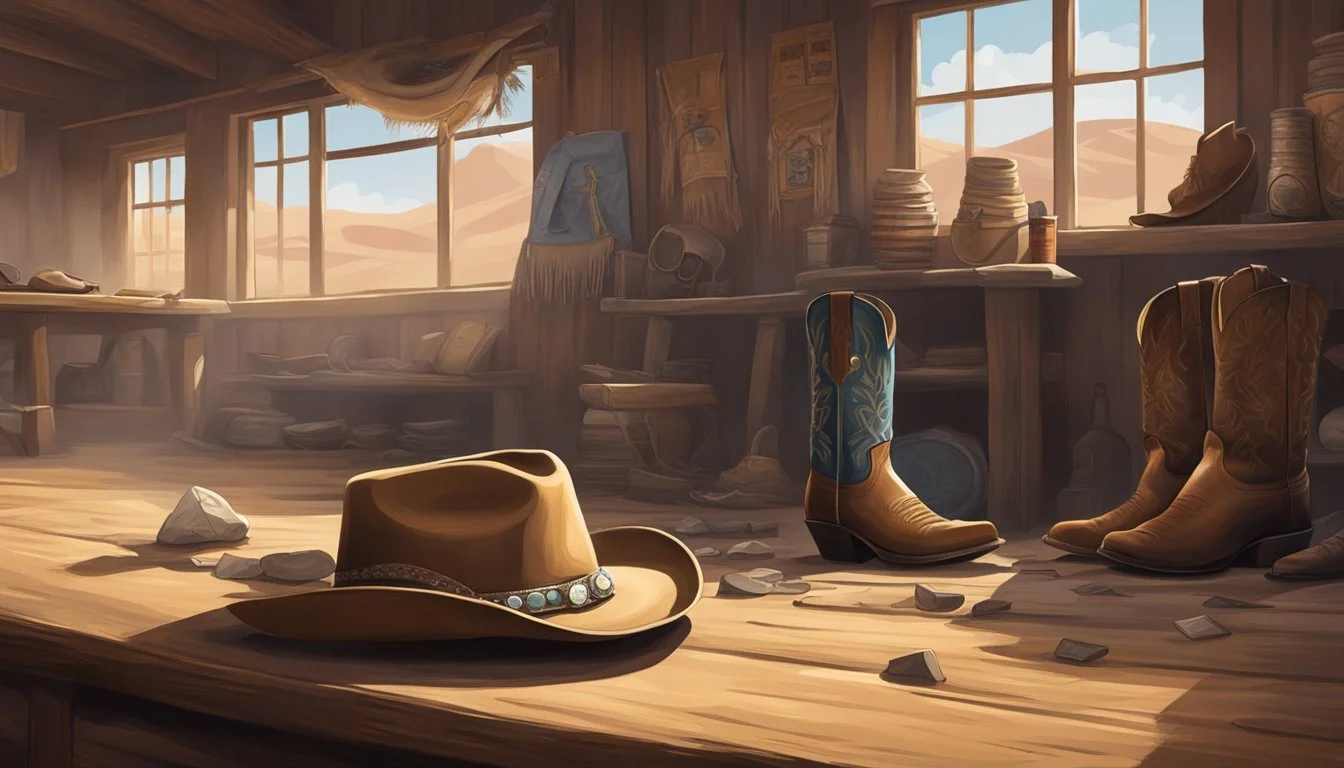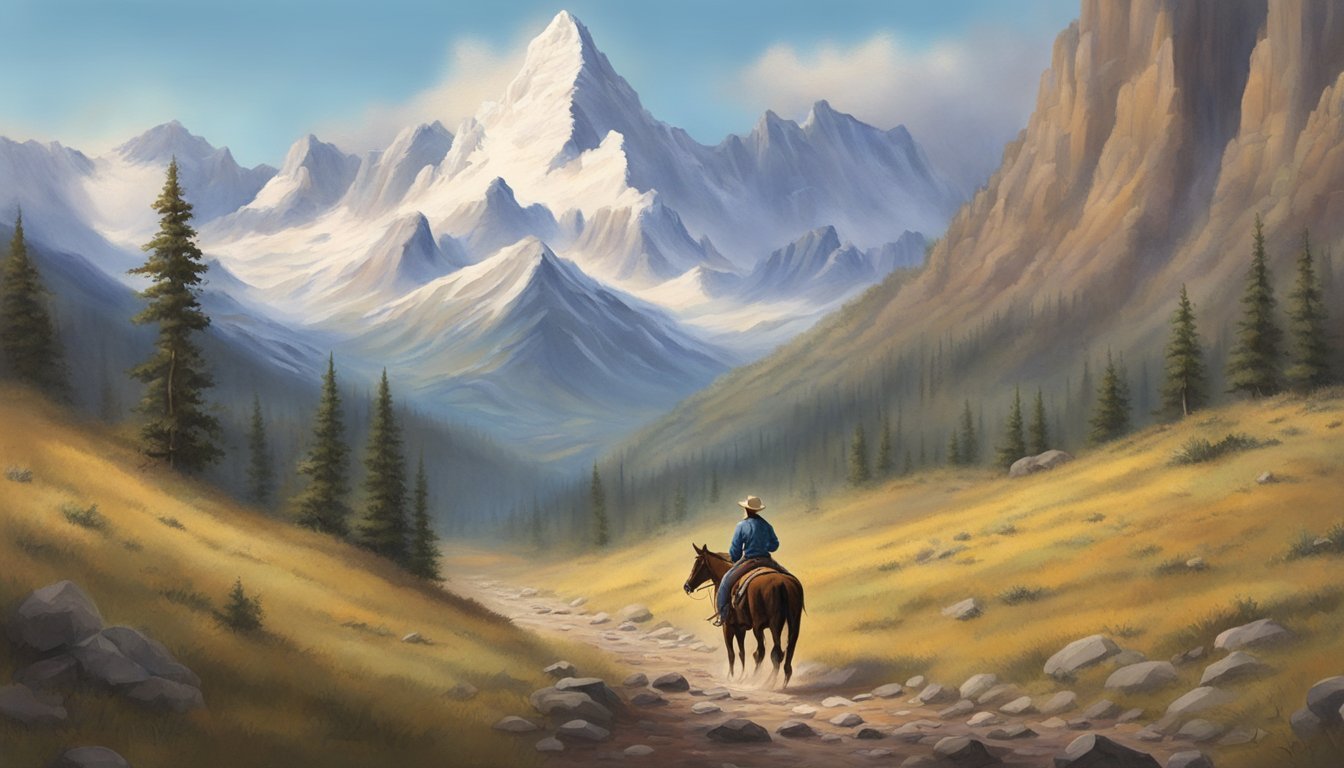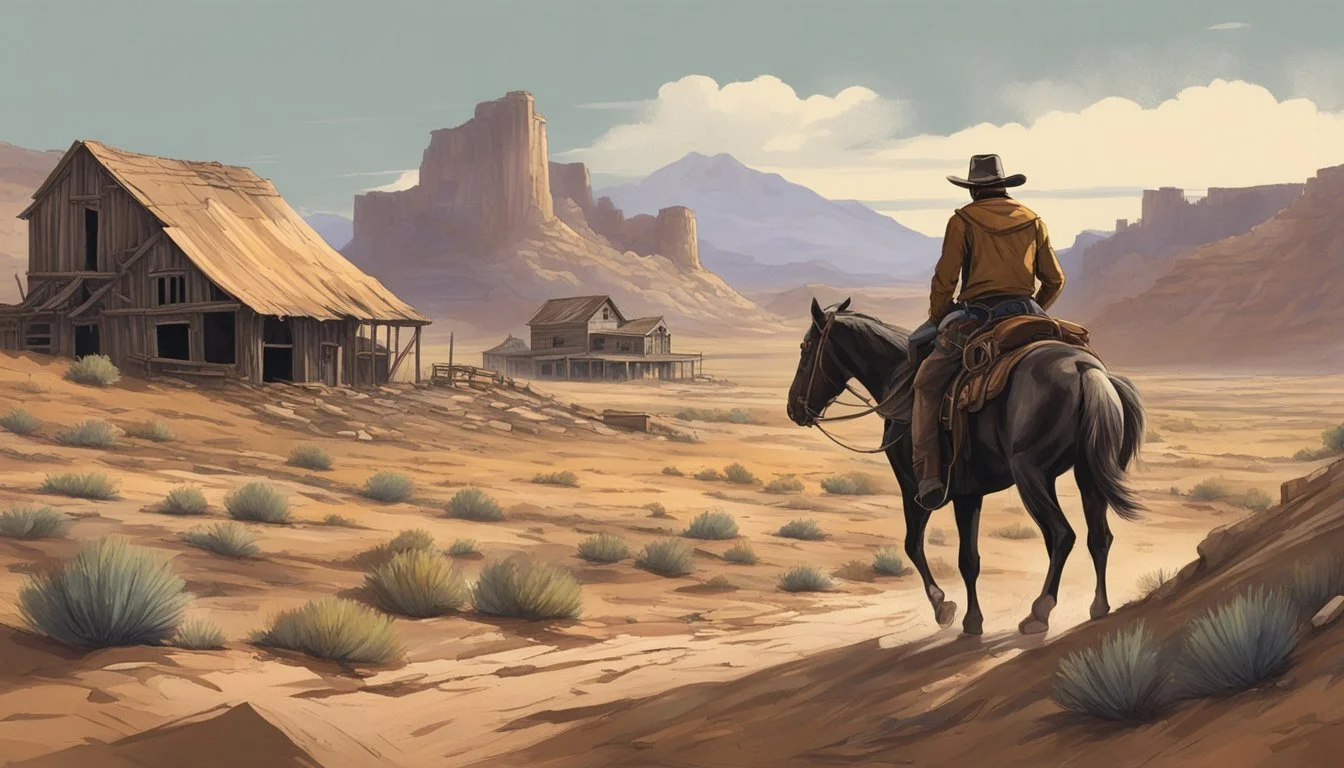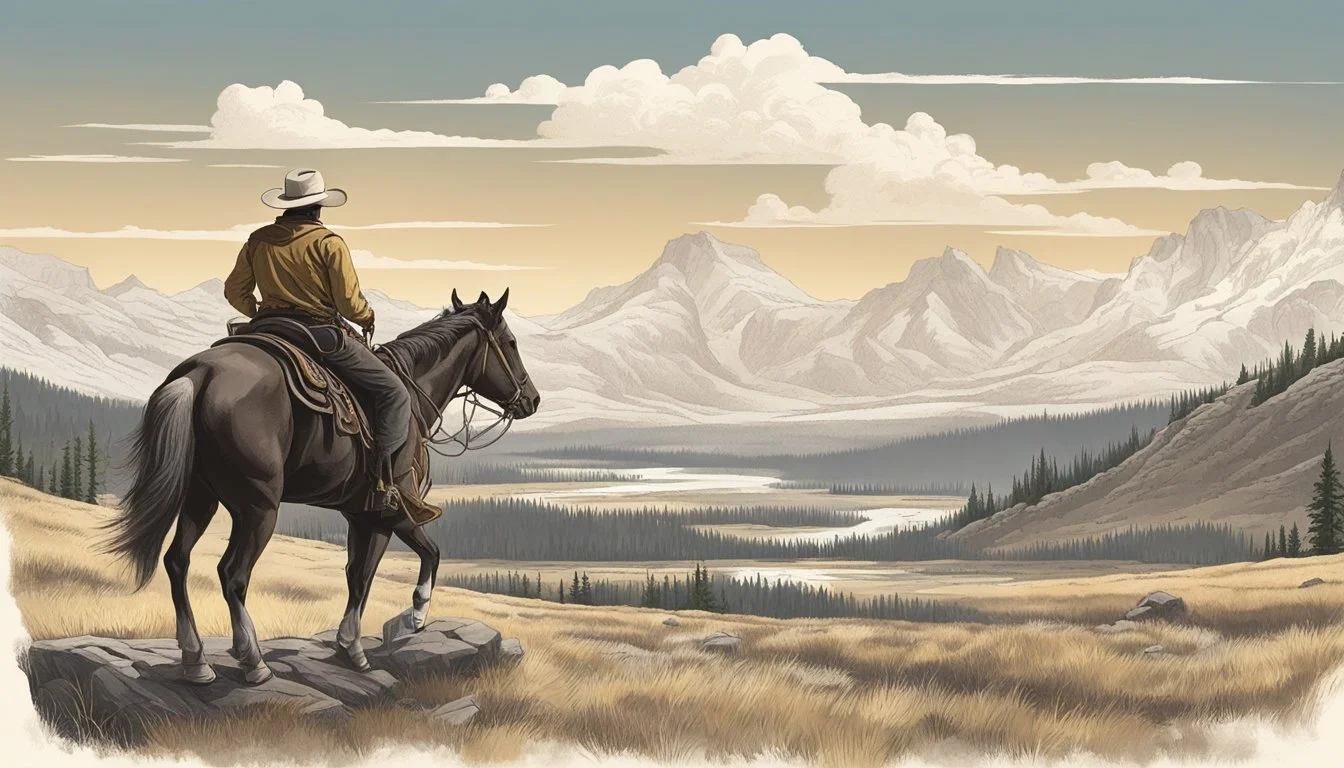Western Movie Tropes in Yellowstone: Homage or Subversion?
Analyzing the Modern Western's Cinematic Heritage
Yellowstone, the hit drama series created by Taylor Sheridan, has captivated audiences with its modern take on the Western genre. Set against the backdrop of Montana's rugged landscapes, the show follows the Dutton family's struggles to maintain their sprawling cattle ranch. Kevin Costner leads the cast as John Dutton, the patriarch fighting to preserve his family's legacy.
While Yellowstone incorporates classic Western elements, it often subverts traditional tropes associated with the genre. The series presents a complex portrayal of contemporary issues facing the American West, including land disputes, political corruption, and the clash between progress and tradition. This nuanced approach sets Yellowstone apart from its predecessors in the Western genre.
Yellowstone's treatment of Native American characters and storylines also marks a departure from conventional Western narratives. The show offers a more progressive and multifaceted depiction of indigenous communities, exploring their modern challenges and aspirations. This approach adds depth to the series and contributes to its fresh perspective on the Western genre.
The Western Genre and Yellowstone
The Western genre has evolved significantly, with Yellowstone emerging as a contemporary reinvention. This popular series both pays homage to classic Western tropes and subverts traditional narratives, reflecting modern American society.
Defining the Western Genre
Westerns typically depict life on the American frontier during the late 19th century. These stories often feature cowboys, lawmen, and outlaws navigating harsh landscapes. Common themes include rugged individualism, frontier justice, and the clash between civilization and wilderness.
Key elements of Westerns include:
Vast, untamed landscapes
Conflicts between settlers and Native Americans
Gunfights and showdowns
Moral dilemmas and personal codes of honor
The genre has long been a staple of American cinema, evolving to reflect changing societal values and perspectives over time.
Early Influences and Classic Westerns
Classic Westerns established many enduring tropes and archetypes. Directors like John Ford shaped the genre with iconic films such as "Stagecoach" and "The Searchers". These early works often romanticized the Old West, presenting simplistic moral narratives.
Italian director Sergio Leone later revolutionized the genre with his "Spaghetti Westerns". Films like "The Good, the Bad and the Ugly" introduced morally ambiguous characters and grittier portrayals of frontier life.
Notable classic Western films include:
"High Noon" (1952)
"The Magnificent Seven" (1960)
"Once Upon a Time in the West" (1968)
These films laid the groundwork for future Western narratives, including contemporary series like Yellowstone.
Yellowstone as a Contemporary Western
Yellowstone brings the Western genre into the 21st century. The series tackles modern issues while retaining classic Western elements. It explores land disputes, political corruption, and family dynamics against the backdrop of Montana's rugged landscape.
Key ways Yellowstone updates the Western genre:
Complex characters with morally ambiguous motivations
Exploration of Native American perspectives and modern tribal issues
Integration of contemporary political and economic themes
Portrayal of modern ranching and land-use conflicts
The show's popularity has sparked renewed interest in Western-themed entertainment, inspiring several spin-offs and similar series.
Taylor Sheridan's Influence on the Genre
Creator Taylor Sheridan has played a significant role in revitalizing the Western genre for television. His approach blends traditional Western themes with contemporary storytelling techniques.
Sheridan's works, including Yellowstone, often feature:
Strong, flawed protagonists
Explorations of power dynamics and family legacies
Authentic portrayals of rural American life
Cinematic visuals that showcase the landscape
Through Yellowstone and other projects, Sheridan has redefined audience expectations for modern Westerns. His influence extends beyond television, impacting how the genre is perceived and created across various media.
Character Analysis and Development
Yellowstone's characters embody complex personalities that both honor and subvert traditional Western archetypes. Their development throughout the series reveals intricate layers of motivation, conflict, and growth.
John Dutton as the Patriarch
John Dutton stands as the cornerstone of the Yellowstone Ranch and his family. Kevin Costner portrays a modern Western hero grappling with moral ambiguity. John's unwavering determination to protect his land clashes with changing times and ethical dilemmas.
His leadership style blends traditional values with ruthless tactics when necessary. This duality creates tension within the Dutton family and challenges viewers' perceptions of right and wrong.
John's character evolves as he faces threats to his legacy, forcing him to reevaluate his priorities and relationships. His journey reflects the broader themes of adaptation and survival in the contemporary West.
Beth Dutton's Complexity
Beth Dutton emerges as one of Yellowstone's most captivating characters. Her fierce loyalty to her father coexists with a sharp business acumen and a traumatic past.
Beth's ruthless exterior masks deep-seated vulnerabilities, creating a multifaceted persona that defies simple categorization. Her relationship with Rip Wheeler adds another layer to her character, revealing moments of tenderness amidst her typically hardened demeanor.
As the series progresses, Beth's backstory unfolds, shedding light on her motivations and the source of her inner turmoil. Her character challenges gender stereotypes in Western narratives, presenting a formidable female force in a traditionally male-dominated world.
Jamie and Kayce Dutton's Paths
Jamie and Kayce Dutton represent divergent paths within the Dutton family dynamic. Jamie's pursuit of political power often puts him at odds with his family's interests, leading to complex moral quandaries and shifting allegiances.
Kayce, in contrast, struggles to balance his responsibilities to the ranch with his own family and Native American heritage. His character arc explores themes of identity and belonging in the modern West.
Both brothers' journeys highlight the internal conflicts within the Dutton family, showcasing how personal ambitions and loyalties can clash in a high-stakes environment.
Rip Wheeler's Role
Rip Wheeler embodies the archetype of the loyal ranch hand with a troubled past. His unwavering dedication to the Duttons, particularly John and Beth, forms a crucial pillar of the ranch's operations.
Rip's character development reveals a softer side beneath his tough exterior, especially in his evolving relationship with Beth. His role often involves enforcing the Duttons' will through violent means, raising questions about morality and justice in the modern West.
As the series progresses, Rip's importance to the Dutton family grows, blurring the lines between employee and family member. His character serves as a bridge between the old ways of the West and the complex realities of the present.
Cultural Representation and Issues
Yellowstone explores complex cultural dynamics in the modern American West. The series tackles issues of Native American representation and environmental challenges with nuance and depth.
Native Americans and the Broken Rock Reservation
The Broken Rock Reservation plays a central role in Yellowstone's narrative. The show portrays Native American characters with complexity, moving beyond stereotypes often seen in Western media.
Thomas Rainwater, the tribal chairman, emerges as a formidable adversary to the Duttons. His character highlights the ongoing struggle for land rights and cultural preservation.
Yellowstone depicts the reservation's efforts to reclaim ancestral lands and protect their heritage. This storyline sheds light on real-world tensions between indigenous communities and neighboring ranchers.
The series also explores internal conflicts within the tribe, showcasing diverse perspectives among Native American characters.
Environmentalism and Modern Challenges
Yellowstone weaves environmental concerns into its plot, reflecting real-world issues facing the American West. The show depicts conflicts between traditional ranching practices and conservation efforts.
Land development pressures feature prominently, with characters debating the merits of preserving open spaces versus economic growth. The series highlights the impact of these decisions on local ecosystems and wildlife.
Renewable energy makes an appearance, with discussions about solar panels and sustainable practices. This reflects the growing emphasis on environmentalism in rural communities.
Water rights emerge as a critical issue, mirroring real-world disputes over this precious resource in arid Western regions.
The Setting of Montana
Montana's rugged landscapes and expansive wilderness serve as a captivating backdrop for Yellowstone, shaping the show's narrative and characters. The state's natural beauty and ranching heritage play crucial roles in bringing the modern Western drama to life.
Portrayal of the American Frontier
Montana embodies the essence of the American frontier in Yellowstone. The show depicts vast open spaces, snow-capped mountains, and rolling prairies that harken back to the untamed West. This setting provides a stark contrast to urban environments, emphasizing the characters' isolation and self-reliance.
The Yellowstone Ranch, a sprawling 300,000-acre cattle operation, stands as a testament to Montana's ranching tradition. It showcases the challenges of maintaining such a large property in the face of modern pressures.
Yellowstone's creators meticulously craft scenes that highlight Montana's diverse terrain. From golden wheat fields to dense forests, the landscapes become integral to the storylines and conflicts.
Montana as a Character in the Show
Montana's presence in Yellowstone extends beyond mere scenery, effectively becoming a character in its own right. The state's unpredictable weather and harsh conditions often influence plot developments and character decisions.
The show explores Montana's complex history, including its settlement by Confederate veterans. This historical context adds depth to the ongoing conflicts between long-time residents and newcomers.
Montana's natural resources play a significant role in the series. Disputes over land use, water rights, and mineral extraction drive many of the show's central conflicts, reflecting real-world issues facing the state.
The connection between the characters and the land is a recurring theme. Montana's beauty and challenges shape the Dutton family's identity and fuel their determination to protect their way of life.
Narrative Themes and Devices
Yellowstone weaves classic Western elements with modern storytelling techniques to create a rich tapestry of themes and narrative devices. The show explores complex relationships, moral ambiguity, and power dynamics against the backdrop of the American West.
Violence and Its Role
Violence permeates Yellowstone, serving as both a plot device and a thematic element. Physical confrontations and deadly encounters punctuate the series, reflecting the harsh realities of frontier life. The show doesn't shy away from graphic depictions, using violence to underscore the high stakes of the Duttons' conflicts.
Characters often resort to force to protect their interests or settle scores. This echoes traditional Western themes while updating them for a contemporary audience. The series explores the psychological toll of violence on its characters, adding depth to their motivations and actions.
Homage vs. Subversion in Storytelling
Yellowstone pays homage to classic Western tropes while simultaneously subverting them. The show features iconic imagery like vast landscapes, horseback riding, and cowboy attire. Yet it challenges expectations by setting these elements in a modern context.
Traditional Western heroes are reimagined as morally complex figures. John Dutton, for instance, embodies both the rugged individualism of a classic cowboy and the ruthless tactics of a modern business tycoon. This blending of old and new keeps viewers engaged and challenges their preconceptions about the genre.
Depth of Familial Bonds and Legacy
Family legacy stands as a central theme in Yellowstone. The Dutton clan's struggle to maintain control of their ancestral land drives much of the narrative. Each family member grapples with their place within this legacy, creating rich character arcs and interpersonal conflicts.
The show explores how family bonds can be both a source of strength and a burden. Loyalty to the Dutton name often clashes with personal ambitions and moral considerations. This depth of familial relationships adds emotional weight to the series' high-stakes plotlines.
Loyalty, Law Enforcement, and Justice
Yellowstone presents a nuanced view of loyalty, law enforcement, and justice. Characters frequently operate in morally gray areas, blurring the lines between right and wrong. The show examines how personal loyalties can conflict with professional duties, especially for those in law enforcement.
Justice in Yellowstone's world is often swift and brutal, mirroring the frontier justice of classic Westerns. Yet the series also explores the complexities of modern legal systems and political maneuvering. This creates a tension between old-world values and new-world realities, driving many of the show's central conflicts.
Production Elements
Yellowstone's production values elevate it beyond typical television westerns. The show's cinematic approach and musical choices create an immersive modern frontier experience.
Cinematography and Visual Style
Yellowstone's cinematography captures the rugged beauty of Montana's landscapes. Wide-angle shots showcase vast prairies and mountain ranges, emphasizing the characters' connection to the land. The series employs a muted color palette, reflecting the harsh realities of ranch life.
Close-ups on weathered faces and calloused hands convey the toll of working the land. Dynamic camera movements during action sequences heighten tension and drama.
Director of photography Ben Richardson uses natural light to create authenticity. This technique enhances the show's gritty realism, distinguishing it from glossier TV productions.
Music and Aural Atmosphere
Composer Brian Tyler's score blends traditional western instruments with modern elements. Haunting guitar riffs and sweeping orchestral pieces underscore emotional moments and scenic vistas.
The soundtrack features country and Americana artists, reinforcing the show's contemporary western setting. Songs by Whiskey Myers, Chris Stapleton, and Lainey Wilson add depth to key scenes.
Ambient sounds of nature - rustling grass, howling wind, and livestock - create a rich sonic landscape. These audio cues immerse viewers in the Yellowstone ranch environment.
The use of silence is equally powerful, heightening dramatic tension in pivotal moments between characters.
Socio-Political Commentary
Yellowstone weaves complex socio-political themes into its narrative, addressing issues like land rights, corporate influence, and political power struggles. The show offers nuanced perspectives on these topics through its characters and plotlines.
Ranching vs. Corporate Interests
The Dutton family's fight to preserve their ranch against encroaching development serves as a microcosm for broader conflicts. Market Equities, a powerful corporation, represents the threat of unchecked capitalism to traditional ways of life. Their attempts to acquire land for commercial development highlight tensions between rural preservation and urban expansion.
The role of the livestock commissioner, held by John Dutton, showcases the intertwining of political power and ranching interests. This position becomes a focal point for debates on land use, animal welfare, and economic priorities in the region.
Depiction of Political Tensions
Yellowstone portrays a complex web of political alliances and rivalries. The Montana Free Militia embodies anti-government sentiment and fears of federal overreach. Their presence adds depth to discussions about individual rights and state autonomy.
The show explores corruption and backroom deals in local politics. Characters navigate a landscape where personal relationships often trump official procedures. This portrayal raises questions about the nature of political power in rural America.
Yellowstone also touches on Native American rights and sovereignty issues. The conflicts between the Broken Rock Reservation and surrounding entities highlight historical injustices and ongoing struggles for self-determination.
Yellowstone's Place in Television History
Yellowstone has made an indelible mark on the television landscape, redefining modern Western dramas and capturing widespread audience attention. Its blend of classic Western elements with contemporary themes has resonated strongly across the country.
Comparison to Other Television Dramas
Yellowstone stands out among television dramas for its unique approach to the Western genre. Unlike traditional Westerns, it portrays a modern-day setting while incorporating familiar cowboy themes. The show's high production values and star-studded cast, led by Kevin Costner, elevate it above typical network fare.
Yellowstone's success on the Paramount Network has been unprecedented. Its fifth season premiere broke viewership records, solidifying its status as a television powerhouse. This achievement is particularly notable given the show's home on a cable network rather than a major broadcast channel.
Cultural Impact and Nostalgia
Yellowstone taps into a deep well of nostalgia for the American West while addressing current issues. Its portrayal of ranching life and land disputes resonates with rural audiences, while also attracting urban viewers with its dramatic storylines and family dynamics.
The show has sparked renewed interest in Western-themed entertainment and fashion. Cowboy hats and boots have seen a resurgence in popularity, mirroring the show's aesthetic. Yellowstone's success has also led to spin-off series and increased tourism to filming locations in Montana.
Yellowstone's influence extends beyond entertainment, sparking conversations about land use, Native American rights, and the changing face of the American West. Its ability to blend nostalgia with contemporary relevance has cemented its place in television history.
Controversial Themes
Yellowstone tackles contentious topics that push boundaries and spark debate. The show explores complex moral dilemmas and societal issues through its characters and storylines.
Addressing Modern Issues
Yellowstone confronts contemporary challenges facing the American West. Land rights and preservation are central conflicts, pitting ranchers against developers and Native American tribes. The series highlights tensions between traditional ways of life and encroaching urbanization.
Corporate greed and political corruption feature prominently. Characters navigate murky ethical waters as they fight to protect their interests. The show raises questions about the true cost of progress and who bears that burden.
Environmental concerns also play a role. Yellowstone explores the impact of tourism and development on fragile ecosystems. It presents a nuanced look at conservation efforts and their effects on local communities.
Mortality, Mercy Kill, and Ethics
Yellowstone doesn't shy away from depicting violence and death. Characters face their own mortality in brutal ways. The show presents unflinching portrayals of injuries, illnesses, and the harsh realities of ranch life.
Mercy killings appear as a controversial plot point. Characters grapple with ending suffering, raising ethical questions about compassion versus preservation of life. One storyline involves a character's struggle with terminal colon cancer, forcing loved ones to confront difficult end-of-life decisions.
Suicide is addressed as characters face overwhelming circumstances. The show examines the impact of such choices on families and communities. It presents a raw look at mental health struggles in rural settings.









